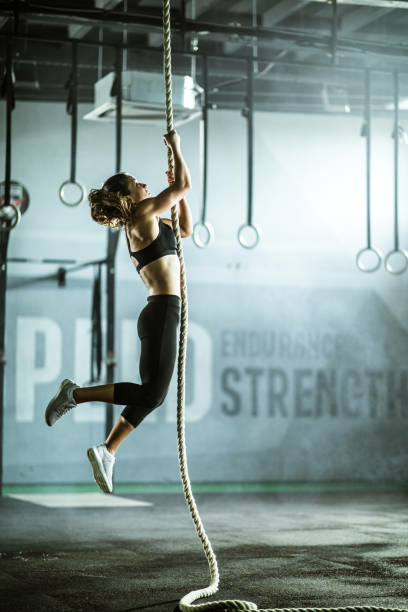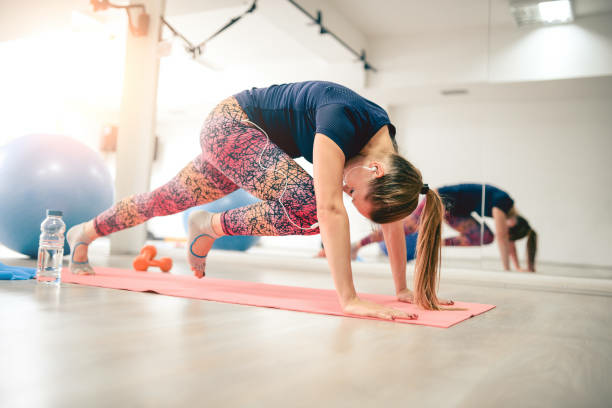Functional Training: Unlocking the Power of Movement
Introduction:
Do you intend to enhance your body movements? Then In 2023 Try this functional training exercises. Functional training has gained popularity in recent years as an effective exercise approach that focuses on improving movement patterns and overall physical functionality. This report delves into the concept of functional training, its benefits, and its comparison with other exercise methods.
Functional Training: Meaning and Principles
Functional training refers to a type of exercise that aims to enhance an individual's ability to perform everyday activities efficiently and without injury. It emphasizes movements that mimic real-life actions, engaging multiple muscle groups and promoting improved coordination, balance, and flexibility. The key principle of functional training is to train movements, not just muscles, to enhance overall functional capacity.
Benefits of Functional Training:
1. Enhanced Everyday Functionality:
2. Improved Core Strength and Stability:
Functional exercises often engage the core muscles, including the abdominals, lower back, and pelvic floor, leading to improved core strength and stability. This, in turn, can enhance overall body control and posture.
3. Increased Joint Stability and Injury Prevention:
Functional training emphasizes movements that enhance joint stability, thus reducing the risk of injuries. By improving muscle balance and coordination, functional exercises can help protect joints and prevent common orthopedic issues.
4. Sport-Specific Performance Enhancement:
Functional training can be tailored to specific sports or physical activities, allowing athletes to improve their performance in a sport-specific context. By mimicking the movements and demands of a particular sport, functional training helps athletes develop the strength, agility, and endurance required for optimal performance.
5. Efficient Total-Body Workout:
Functional training often incorporates compound exercises that engage multiple muscle groups simultaneously. This approach provides a time-efficient workout, as it targets several areas of the body in a single exercise session.
5 highly effective functional training exercises:
- Squats: Squats are a fundamental functional exercise that engages multiple muscle groups, including the quadriceps, hamstrings, glutes, and core. They mimic the movement pattern of sitting down and standing up, making them highly functional for daily activities.
- Deadlifts: Deadlifts work the muscles of the posterior chain, including the glutes, hamstrings, and lower back. This exercise strengthens the muscles needed for lifting and bending, improving overall functional strength.
- Lunges: Lunges target the lower body muscles, including the quadriceps, hamstrings, and glutes. They help improve balance, stability, and coordination, while also simulating movements such as walking and climbing stairs.
- Push-ups: Push-ups are a compound exercise that engages the chest, shoulders, triceps, and core muscles. They mimic the pushing motion used in activities like pushing objects or getting up from the floor, making them highly functional.
- Farmer's Walk: The Farmer's Walk involves carrying heavy weights (such as dumbbells or kettlebells) in each hand and walking for a specific distance or time. This exercise strengthens the grip, forearms, core, and leg muscles, simulating carrying heavy objects in real-life situations.
Functional Training vs. Weights: Which is Better?
Functional training and traditional weightlifting are not mutually exclusive but rather serve different purposes. While weightlifting focuses on isolating specific muscles and building strength, functional training emphasizes overall movement patterns and functionality. Both approaches have their benefits, and the choice depends on individual goals and preferences. Combining elements of both can provide a well-rounded fitness routine.
Here from below table you will get a better insight of above things -
| Aspect | Functional Training | Weightlifting |
|---|---|---|
| Focus | Movement patterns and functionality | Muscle isolation and strength |
| Main Goal | Enhance overall functional capacity | Build strength and muscle mass |
| Exercises | Full-body movements that mimic real-life activities | Isolated exercises targeting specific muscles |
| Equipment | Utilizes a variety of tools such as resistance bands, medicine balls, and bodyweight exercises | Relies on free weights, weight machines, and barbells |
| Muscle Engagement | Engages multiple muscle groups simultaneously | Focuses on specific muscle groups |
| Core Strength | Emphasizes core engagement and stability | Core engagement is secondary to muscle targeting |
Does Functional Training Build Muscle?
Functional training can contribute to muscle development, although differently from traditional weightlifting. While functional training primarily focuses on improving movement patterns and functionality, it can still lead to muscle growth by engaging multiple muscle groups simultaneously. However, for those seeking significant muscle hypertrophy, dedicated strength training with heavier weights may be more effective.
Functional Training vs. HIIT: Understanding the Difference
High-Intensity Interval Training (HIIT) and functional training are distinct but complementary exercise approaches. While HIIT involves intense bursts of exercise followed by short rest periods, functional training emphasizes movements that improve daily functionality. Both methods offer various health and fitness benefits and can be incorporated into a well-rounded training regimen based on individual preferences and goals.
Here you will get better insight of above things-
| Aspect | Functional Training | HIIT |
|---|
| Cardiovascular Benefits | Provides cardiovascular conditioning | Increases cardiovascular fitness and endurance |
| Strength Development | Improves strength through functional movements | May include bodyweight or resistance exercises |
| Fat Burning | Effective for burning calories and reducing body fat | Promotes fat burning and improves metabolism |
| Adaptability | Adaptable to various fitness levels and goals | Can be modified to suit individual fitness levels |
Conclusion:
Functional training provides a holistic approach to exercise by prioritizing movement patterns and overall functionality. Its benefits include improved everyday functionality, enhanced core strength and stability, reduced injury risk, sport-specific performance enhancement, and efficient total-body workouts. While functional training and weightlifting serve different purposes, they can be combined for a well-rounded fitness routine. Functional training can contribute to muscle development, albeit in a different manner than traditional weightlifting. Lastly, functional training and HIIT are distinct but complementary exercise methods, each with its unique advantages.
In 2023 Try this functional training exercises :- A complete guide try this and see the changes.
Some of the FAQS:-
Q: What is the difference between functional training and traditional weightlifting?
Q: Can functional training help with weight loss?
Q: Is functional training suitable for beginners?
Q: Can functional training help improve sports performance?
Q: Do I need equipment for functional training?
Q: Is functional training suitable for older adults?
Q: Can functional training build muscle mass?









